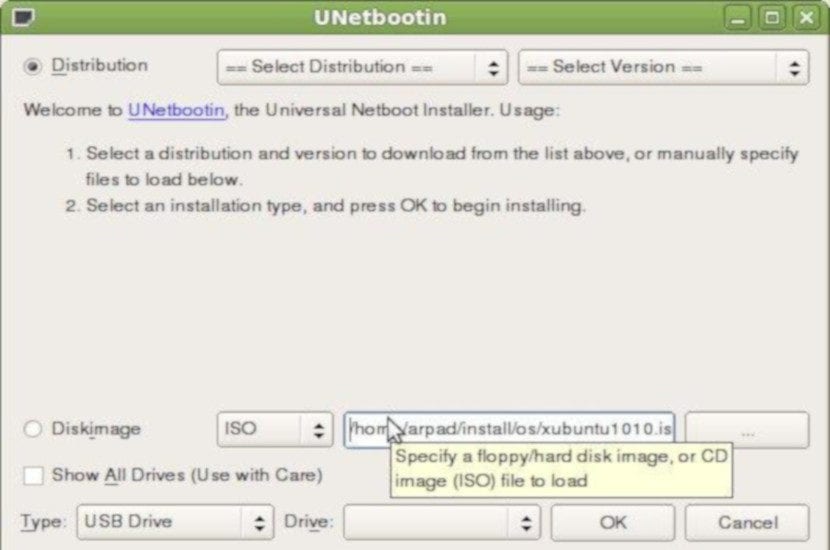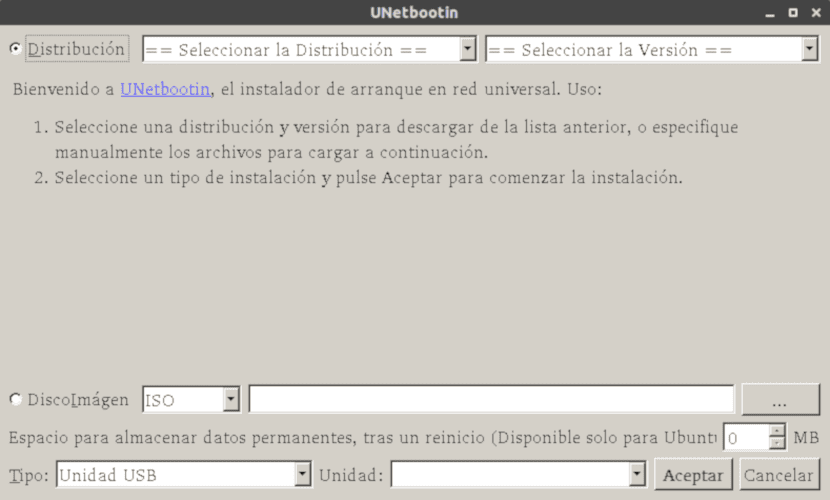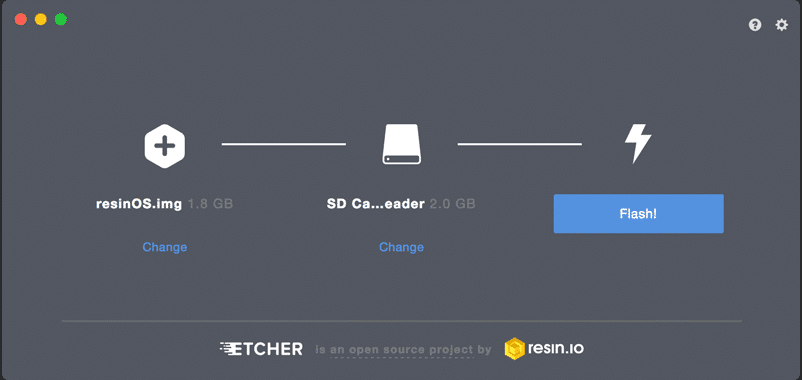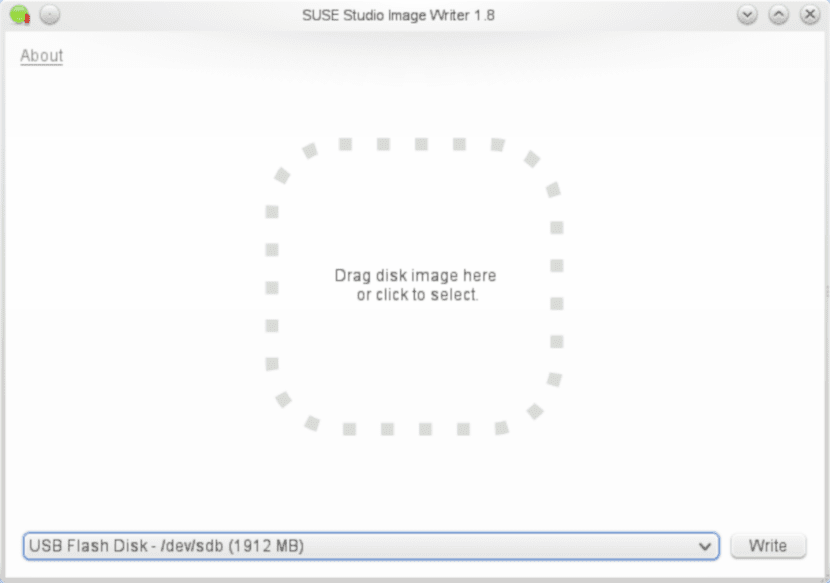
Almost 10 years ago, Gnu / Linux users had to get or burn a cd or dvd in order to install Gnu / Linux. The process became tedious if in addition the distribution needed to be updated and we did not have an Internet connection, since in addition to needing a fast connection we also needed to have blank discs to record the ISO images.
The popularization of pendrives or USB drives has made all this surpassed due to the ease with which data is erased and written as well as its handling, its portability and its low price. Also, the latest BIOS make the pendrives can load ISO images of Gnu / Linux and therefore are good devices to install any Gnu / Linux distribution.
What is Unetbootin?
Unetbootin is a free program that allows us to burn any ISO image of any Gnu / Linux distribution on any pendrive. Unetbootin is one of many programs that perform these operations, but it is true that unlike other programs, Unetbootin allows persistence on the USB drive.
Persistence is the configuration that allows us to use part of the USB storage in those units that have an ISO image recorded from a Gnu / Linux distribution. If we only want to use the USB as a drive to install the distribution, having or not having persistence is not important but if we want to use the ISO Image as LiveCD, then persistence will help us save the documents that we create when working with the liveCD as well as the configurations that we make to the LiveCD.
Unetbootin allows you to do all this, but also It helps us download the latest version of the ISO image and save it to the pendrive without having to go to the official website or search the image through our archives.
Where can you get it?
Unetbootin has an official website that will allow us to download the installation program and install it in our Gnu / Linux distribution as well as in any operating system. But, the success of Unetbootin lies in its installation. By default, Unetbootin has been present in Ubuntu and in all its official flavors. This makes users aware of this program to create bootable pendrives with versions of Ubuntu or other distributions. But this is not in the current versions of Ubuntu and if we want to install it we have to open the terminal and write the following:
sudo add-apt-repository ppa:gezakovacs/ppa sudo apt-get update sudo apt-get install unetbootin
If, on the other hand, we have another distribution like fedora, then we have to do the following:
sudo dnf install unetbootin
If we use Arch Linux or its derivatives, then we can install Unetbootin with the following command:
pacman -S unetbootin
And in OpenSUSE We have to write the following to install Unetbootin:
sudo zypper install unetbootin
With this we will have eThe Unetbootin program installed on our Gnu / Linux distribution but it will not be the only thing we need to be able to use this program correctly and create a bootable USB.
What do I need to use Unetbootin?
To use Unetbootin correctly we need certain elements for the result to be correct. If we install Unetbootin on a Gnu / Linux distribution, the first thing we will need is have an internet connection. evidently we need a pendrive where to install the ISO image of the distribution. As usual It is recommended to have a pendrive of at least 4 Gb of capacityalthough you can burn a business card size ISO image that requires a smaller capacity.
We will also need the ISO image of the distribution that we want to burn. Popular distributions can be downloaded through the Unetbootin program but if we want to record a modern version of a distribution or a distribution that is not within the application list, such as Manjaro.
How to use Unetbootin?
The Unetbootin tool is very easy to use. After executing a single screen like this will appear.

In the first option (which will be marked by default), Distribution, we have to select the Distribution that we want to download, then the version we want and then we have to go to the bottom in Type, where We will select USB Drive and in Drive we mark the drive that our distribution has assigned to the pendrive. Then we click "OK". Then the process of creating the bootable pendrive will begin. It will take quite a few minutes as Unetbootin will download the ISO image and then create the flash drive. If we have a slow connection, the creation can exceed the hour.
The second option, the one I personally prefer, is to check the Image Disk option. We leave the ISO option selected and then we press the button with the three dots to find the ISO image of the distribution that we want to use. Since you don't have to download anything, the process is faster than the previous one. In Unit we select the pendrive unit and then press the OK button.
Below the option "Disc or Image" appears a text that says "Space to store permanent data, after a reboot (Available only for Ubuntu)" and a box with a number that we can modify so that Unetbootin can create that persistence that allows us to store documents, data, etc ... If we have a pendrive with a large capacity then we can divide the pendrive with half the space or even more so, creating not only a bootable pendrive but also a powerful tool.
What alternatives are there to Unetbootin?
Etcher

The toughest rival Unetbootin currently has is called Etcher. This program is created with Electron technology and has a simple and minimalist interface that will allow us to burn the ISO image on any pendrive and make it bootable. Unlike Unetbootin, Etcher does not download the ISO image of the distribution we want for us. But the compatibility with distributions is even greater if possible than with Unetbootin. We can get Etcher through your official website.
Yumi / Sardu
Years ago, a rival for Unetbootin was born that not only allowed us to create a bootable pendrive but also we could use several ISO images on the same pendrive. These programs were born first for Windows but were brought to Gnu / Linux making it possible to create a bootable USB stick with various Gnu / Linux distributions. These tools are ideal if we want to install a Gnu / Linux distribution and we don't know which one will be compatible with the computer. In that case we can download several distributions and then choose the one that works best on the computer. We can get Yumi through her official website.
dd
Dd is a command from Gnu / Linux distributions that allows us to burn an ISO image on any drive or hard disk and also make that ISO image bootable. The good points of this method are that it does not need additional facilities and is faster than any other tool; the downside is that advanced knowledge is required and it does not allow persistence creation or ISO image download for us.
SUSE Studio Image Writer

SUSE Studio ImageWriter is a small Very simple tool that creates a bootable pendrive quickly but graphically. SUSE Studio ImageWriter essentially uses the dd command but offers a friendly interface for novice users. We can get this tool through the official website.
And which one do you prefer?
At this point, many of you will prefer Unetbootin and others will prefer another tool. I personally think that Unetbootin is not a bad tool. I think that a mistake was made when removing it from the latest versions of Ubuntu and I think that despite being many years old, it is a great tool. The truth is that nowadays no tool offers the possibility of downloading the ISO for us. Something useful for novice users Do not you think?
I'll stick with MintStick, the tool to create Linux Mint bootloaders. It is the one that has worked best for me along with the one from SUSE.
Unetbootin used to give me problems, and some distros recommend against using it.
I stay with etcher, super simple, it is valid for all Distros and most importantly, it never fails, unetbooting goes fatal to death
I use SUSE Studio ImageWriter, because I use manjaro and it is the one recommended in the wiki. When I used ubuntu, I used unetbooting, but most of the time the pendrive did not start, until I got tired of the system breaking and I had to reinstall when I updated the graphics drivers and when you installed an application, you had to first add the repository, apt -get etc.etc, now in manjaro I forget all that and I enjoy my operating system and in addition to not having to do anything to install / update the graphic drivers and that they do not give problems, the kernels are installed with a single click.
I use the last 2 and woeusb if I have to install some windows. and by the way, I have an amd x2 5600 computer bought in 2008 and the linux usb booters work for me. Of course I did not try it in 2008 but I know that in 2012 and 13 they worked for me
The image recorder is great!